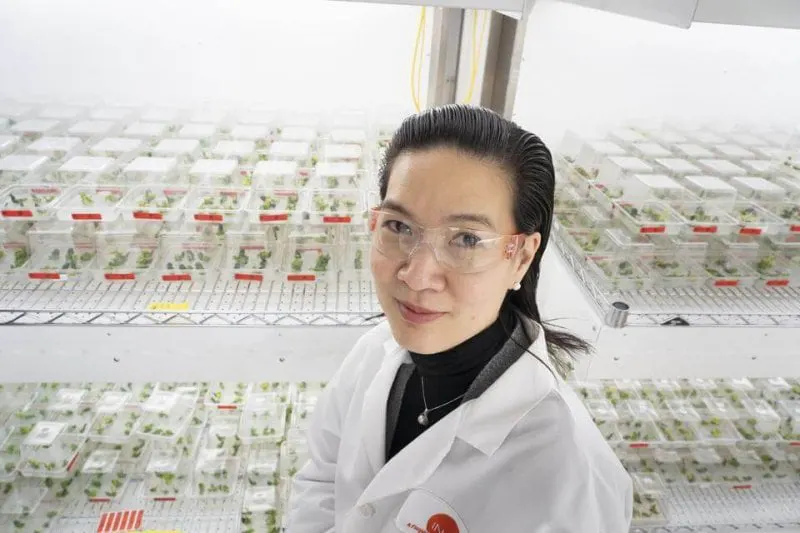‘Less water, fertilizer, pesticides and land’? How next-generation soy and corn seeds optimized with CRISPR and AI can increase crop yields while lowering our carbon footprint
‘Less water, fertilizer, pesticides and land’? How next-generation soy and corn seeds optimized with CRISPR and AI can increase crop yields while lowering our carbon footprint

Inari wants to engineer crops that require less water, fertilizer, pesticides and land. The company is focusing on soybeans and corn as its first crops because they require 300 million acres of land in North and South America to grow. Inari’s SEEDesign platform can increase soybean and corn yield by 20% while lowering water usage by 40% and reducing corn’s nitrogen needs by 40%.
…
Genetically modifying crops can involve removing or knocking out unwanted genes for a specific purpose, such as reducing the need for pesticides. Genetic modification can also artificially insert genes into a plant. Usually, bacteria are used to deliver the new genes.
The introduction of foreign genes into plants is one of the main controversies. However, Inari is not introducing outside genes into its crops. Instead, the company is altering genes that already exist in the plants through gene editing.
Its SEEDesign platform uses predictive design and artificial intelligence (AI) to understand the genetics of plants and makes blueprints for its gene-editing tools that can make multiple edits in a single genome. The edits can make crop seeds with higher yields and lower agricultural footprints.
Read the original post
 | Videos | More... |

Video: Nuclear energy will destroy us? Global warming is an existential threat? Chemicals are massacring bees? Donate to the Green Industrial Complex!
 | Bees & Pollinators | More... |

GLP podcast: Science journalism is a mess. Here’s how to fix it

Mosquito massacre: Can we safely tackle malaria with a CRISPR gene drive?

Are we facing an ‘Insect Apocalypse’ caused by ‘intensive, industrial’ farming and agricultural chemicals? The media say yes; Science says ‘no’
 | Infographics | More... |

Infographic: Global regulatory and health research agencies on whether glyphosate causes cancer
 | GMO FAQs | More... |

Why is there controversy over GMO foods but not GMO drugs?

How are GMOs labeled around the world?

How does genetic engineering differ from conventional breeding?
 | GLP Profiles | More... |

Alex Jones: Right-wing conspiracy theorist stokes fear of GMOs, pesticides to sell ‘health supplements’





 Trust issues: What happens when therapists use ChatGPT?
Trust issues: What happens when therapists use ChatGPT? Fighting deforestation with CO2: Biotechnology breakthrough creates sustainable palm oil alternative for cosmetics
Fighting deforestation with CO2: Biotechnology breakthrough creates sustainable palm oil alternative for cosmetics California, Washington, Oregon forge immunization alliance to safeguard vaccine access against federal undermining
California, Washington, Oregon forge immunization alliance to safeguard vaccine access against federal undermining Viewpoint — Fact checking MAHA mythmakers: How wellness influencers and RFK, Jr. undermine American science and health
Viewpoint — Fact checking MAHA mythmakers: How wellness influencers and RFK, Jr. undermine American science and health 30-year-old tomato line shows genetic resistance to devastating virus
30-year-old tomato line shows genetic resistance to devastating virus Viewpoint: Video — Big Solar is gobbling up productive agricultural land and hurting farmers yet providing little energy or sustainabilty gains
Viewpoint: Video — Big Solar is gobbling up productive agricultural land and hurting farmers yet providing little energy or sustainabilty gains The free-range chicken dilemma: Better for birds, but with substantial costs
The free-range chicken dilemma: Better for birds, but with substantial costs ‘You have to treat the brain first’: Rethinking chronic pain with Sanjay Gupta
‘You have to treat the brain first’: Rethinking chronic pain with Sanjay Gupta
